The discovery of gamma-ray bursts is recent. The first detection of this phenomenon was carried out by one of the military satellites of the Vela project, which began in 1963. During the Cold War, the United States and the USSR kept an eye out for the slightest act of belligerence, and particularly for nuclear tests. Despite the treaty on the prohibition of atomic tests in the atmosphere and space (signed in August 1963), the American army launched a reconnaissance mission to identify such traces. The Vela satellites were equipped with detectors of gamma-rays, X-rays and neutrons. On July 2nd 1967, the detectors went off: a very brief emission had been detected. After verification, it was clear that this gamma radiation was not of human origin, nor even terrestrial. But it was not until 1973 that this discovery was made public, once the military confidentiality had been lifted. Gamma-ray bursts quickly aroused the curiosity of the scientific community. There were many questions. What is the source of such flashes of light? By what mechanism(s)? Do they appear in our galaxy, the Milky Way, or in more distant galaxies, which would imply an even more colossal energy?
The map of the bursts
From 1991 onwards, NASA was able to collect crucial information thanks to the COMPTON space observatory, a giant satellite on which the Burst And Transient Source Experiment (BATSE) instrument was located. This mission revealed that gamma-ray bursts are divided into two distinct groups:
– short bursts (about 30% of the detected bursts) with high characteristic energy (about 1000 keV). Their duration is less than 2 seconds
– long bursts (70%) with a lower characteristic energy (of the order of 100 keV) and whose duration can reach several tens of minutes.
The BATSE experiment allowed the detection of more than 2500 gamma-ray bursts between 1991 and 2000 and a map of the sky was established. But for lack of a precise localization (a few square degrees) it was not possible to cross-identify bursts with celestial sources.
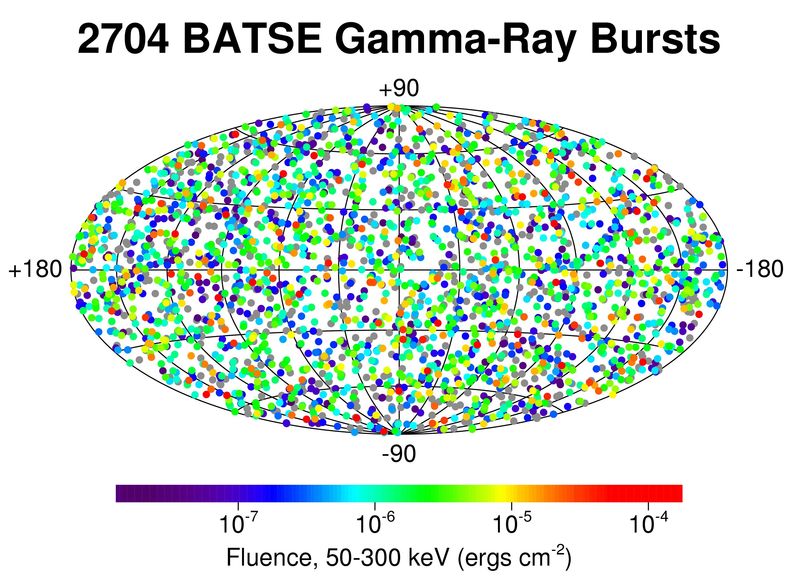
This distribution is “isotropic”: the bursts are distributed randomly on the map indicating that they are either very close to the Earth, or very far, of extragalactic origin. No concentration of bursts along the plane of the Milky Way, symbolized on the map by the horizontal center line, appears. This most likely excludes candidates from our galaxy.
Broadening the field of study and deciphering distant sources
To determine the origin of gamma-ray bursts, it became necessary to locate them precisely in order to measure their distance. In April 1996 the Italian satellite BeppoSAX was launched. On 27 February 1997, the instruments on board the BeppoSAX satellite detected and localized the burst GRB970228. The precise location of the burst in the X-rays, rapidly transmitted to the ground, allowed scientists to point powerful ground telescopes located in La Palma in Spain towards the source. A weak and decreasing signal was detected. Thus, the existence of an afterglow emission was discovered. This late-time, weaker emission radiates in the X-rays, optical and radio waves. This discovery was pivotal: while X-rays and gamma rays are only observable from space, these other types of radiation allow partial follow-up from Earth! This eventually opened up a new field of study focused on the follow-up of gamma-ray bursts.
.
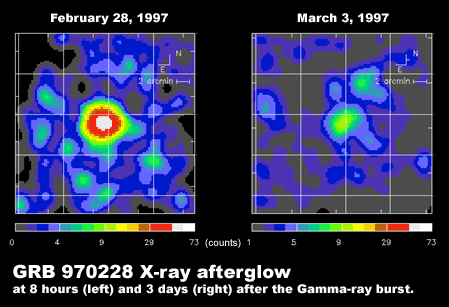
A few months later on May 8th 1997, GRB970508, a new burst, was detected and localized in the X-rays by BeppoSAX. The precise localization of the burst allowed the Keck telescope on Hawaii to be pointed in its direction and thanks to the afterglow emission, a spectral analysis was performed. This allowed for an estimation of the burst’s distance with its redshift measurement (see also “Measurement Tools”). The redshift is a change in the wavelength of radiation in space, when its source moves away from the observer (Doppler effect): the higher the redshift, the farther away the source is. For the first time, the distance of a burst was calculated. In the case of the long burst GRB970508, the calculated redshift is 0.835, which is equivalent to 6 billion light years! The hypothesis of an extragalactic origin of the bursts was thus verified. It became clear to the community that a better understanding of gamma-ray bursts would involve the rapid transmission of a precise localization of the burst to a reactive network of ground-based telescopes.
Collaborating between ground and space
In October 2000 saw the launch of the HETE-2 (High Transient Explorer) mission take place. One of its specificities was to have a processor on board to rapidly calculate the position of the burst. Once the coordinates were established, they were sent to Earth via a radio transmitter and received by a network of 15 relay antennas deployed on the surface of the globe under the satellite’s path. This strategy made it possible to discover the afterglow of a short burst (GRB050709). The European satellite, INTEGRAL (INTErnational Gamma Ray Astrophysics Laboratory) was launched in orbit in 2002 and applied the coded mask technique for the detection of gamma-ray bursts. This mission, still in operation, discovered the polarization of the prompt emission of the bursts, reinforcing the fireball model.
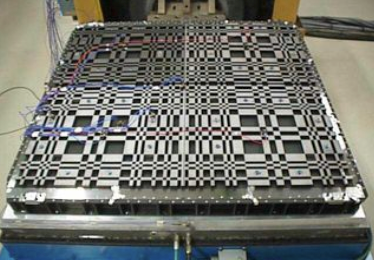
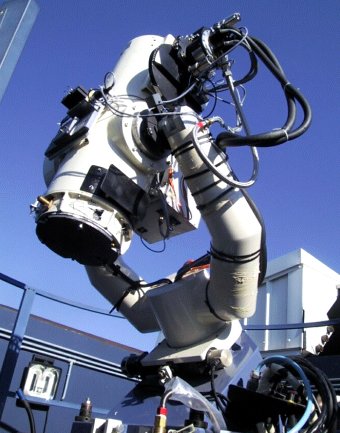
The SWIFT era
In 2004, a significant step was taken with the launch of the NASA SWIFT satellite equipped with a large field gamma telescope and a very sensitive X-ray camera. Another specificity of this mission is its particularly agile platform, which allows it to quickly slew in the direction of the burst in order to study its afterglow emission. By way of example, SWIFT detected on 23 April 2009 the most distant gamma ray burst to date: GRB090423. Its distance is estimated at 13 billion light years (redshift of 8.2) making it one of the most distant objects ever observed. This burst comes from the death of a massive star that took place 630 million years after the Big Bang (as a reminder, the Big Bang took place 13.7 billion years ago). This event testifies to the early ages of the Universe.
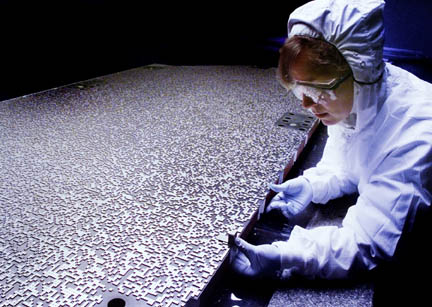
Ground robotic telescope networks were set up to monitor and study the alerts broadcast by the SWIFT satellite. For example, the TAROT telescope was specifically designed to target transient objects as quickly as possible. On September 4th 2005, this telescope allowed us to study the light emitted by the gamma-ray burst GRB050904, which took place when our Universe was only 900 million years old, or 7% of its present age. With a mirror of only 25 cm in diameter, TAROT detected an object located 12.8 billion light years away, which highlights the high energy aspect of gamma-ray bursts. The latest mission, the NASA Fermi satellite sent to orbit in 2008, extends the study of the prompt emission to higher energy bursts. Fermi notably detected GRB080916C, a gamma-ray burst whose released energy makes it the most violent electromagnetic explosion ever observed.




